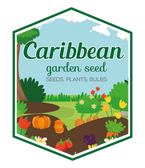
Honeydew Melon Seed - Grow In the garden, in containers, on balconies or porches HEIRLOOM , Organic,Utreated Non gmo
FAST & FREE SHIPPING
Over 90% of our orders are processed and ship out by next business day.
We are currently processing and shipping most orders within 1-3 business days. (backorders not included) Due to high demand during the peak months of January to May, orders may require additional time for packaging /shipment.
Free shipping for orders over $54.95. Excludes live plants, fresh products And Stackable Black Plastic Nursery Crate
Shipping and handling charges will cover outbound freight and packaging materials. Fees are applicable to all orders, based on total order value pre-tax. Expedited services can be selected at Checkout with extra fees.
- Free shipping to lower 48 states on orders $54.95+
- (Most Items), excluding live plants, plant bulbs, and black plastic nursery crate.
- Safe Seed Pledge
- Satisfaction Guaranteed
- Select your desired size and/or color from the available options.
Enjoy homegrown honeydew even if you don't have a garden bed.
Honeydew melons provide a sweet summer treat, but container growing requires special consideration for the long vines. You can grow honeydews in containers on balconies or porches if you provide the necessary support to train the vines vertically. Well-anchored trellises, such as those attached to a wall or fence, support the weight of the developing melons. Plant your honeydew seeds directly in the permanent pot once the soil temperature reaches 65 degrees Fahrenheit.
1
Place a 10-gallon planter in a location that receives six to eight hours of sunlight daily. Use containers with bottom drainage holes. Set the pot next to a firmly anchored trellis.
2
Fill the container with moist potting soil to within 3 inches of the rim. Mix 1/3 cup of 5-10-5 fertilizer with the soil in the pot. Use a soil that primarily contains compost, peat, and vermiculite or perlite. These soils don't compact in a container like a straight soil mix. Peat-based mixtures also retain the moisture necessary for growing melons, or you can add water-holding polymer crystals to the potting mixture.
3
Sow three honeydew seeds near the center of the pot. Plant them approximately 1 inch deep. Select a short vine honeydew variety, if available, for container growing.
4
Water the soil in the pot when the top inch begins to feel dry. Depending on temperature and sunlight, potted melons may require daily irrigation.
5
Thin the seedlings so only the strongest remains after they germinate and reach a height of 3 inches.
6
Tie the honeydew vine to the trellis once it grows to a sufficient length. Use a cloth plant tie looped loosely around the vine so it doesn't constrict the vine as it grows. Continue to tie the vine up the trellis at intervals of 8 to 10 inches as the plant grows.
7
Create a sling from a piece of fabric or pantyhose once the honeydew fruit begins to form. Tie the sling to the trellis directly beneath the fruit. Rest the melon in the sling, which provides support to the developing honeydew.
8
Harvest the honeydew melon when the melon reaches its ripe color, which is usually white or pale green depending on the variety. Ripe melons feel slightly soft at the blossom end and some varieties may slip from the vine on their own once mature. Some honeydew varieties develop a sweet fragrance near the stem end when ripe.
Materials: heirloom,Cucumber,Heirloom Cucumber,vegetable seeds,annual,garden Vegetable,pickling,slicing,snacking,vegetable,seeds,Dosakai Melon,Indian Cucumber Select your desired size and color from the available option
HOW TO GROW GUIDE
LET OUR CUSTOMER SPEAK FOR US

![[Seeds] - Caribbeangardenseed](http://caribbeangardenseed.com/cdn/shop/files/gift-card-gift-card-1_1024x1024_dfa857db-9150-4315-a362-7f0bb3fb9c47_60x28.png?v=1722895789)







